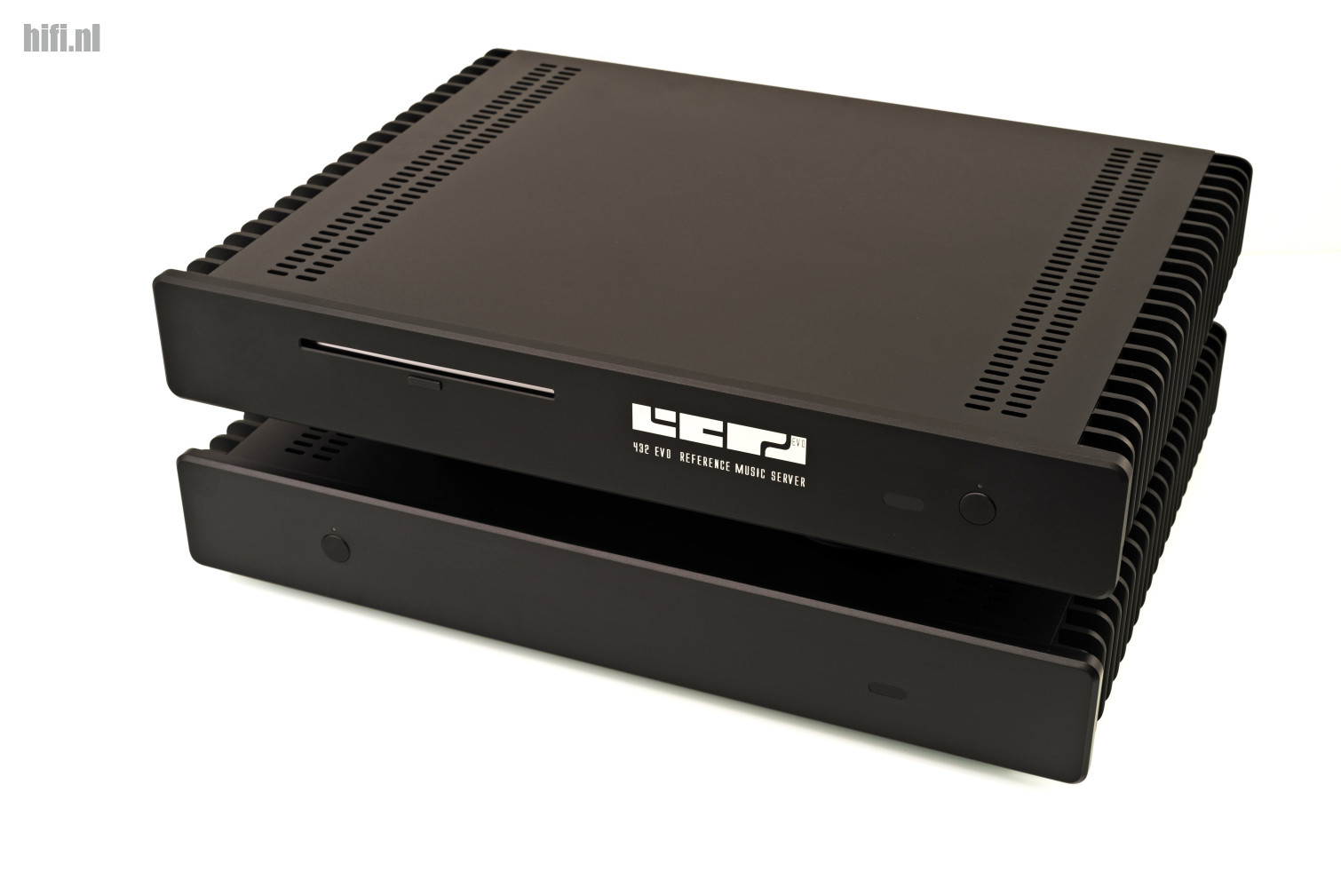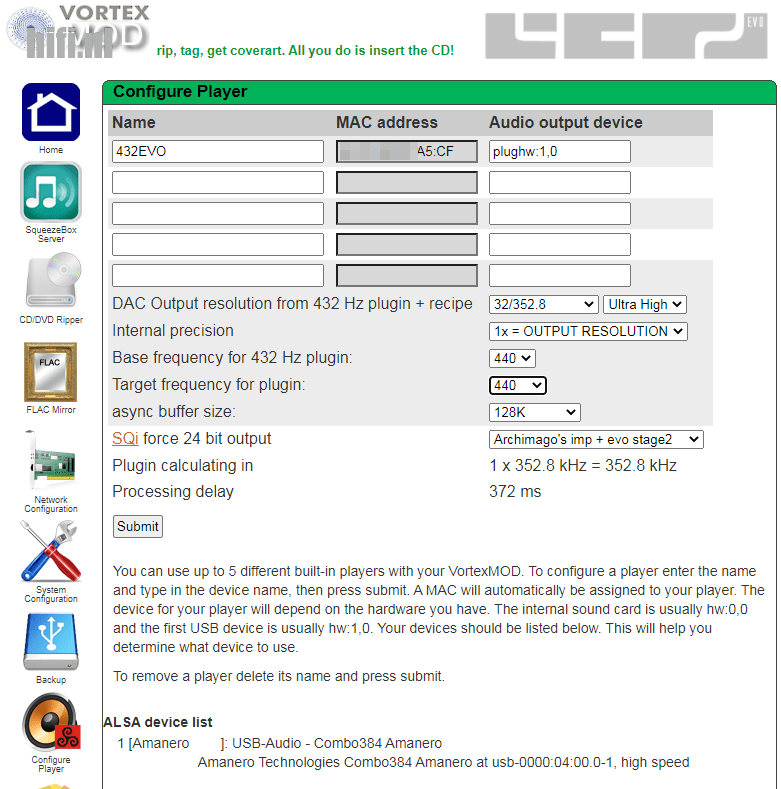
A special designer with products that are just as special: how differently a high-end music server can function and perform, is proven by Belgian 432 EVO owner Frederic Vanden Poel. A very driven man whose roots are in 20 years of Linux experience and network security consultancy within strongly secured environments such as financial institutions. This combined with his passion for high-end audio has resulted in his own 432 EVO brand in 2013. The 432 Master reviewed here, is the undisputed flagship model from the 432 EVO range which is further comprised of Aeon, High-End and Standard models.
Voor Nederlands, klik hier.
432 Hz
The fact that Frederic has his very own ideas about many design aspects can be recognized in just about all facets of his series of music servers. It starts with the strange option to change the pitch from the commonly used standard of 440 Hz to the slighty lower 432 Hz. The first question that comes to mind, is why someone would prefer this, and what thoughts are behind this choice?
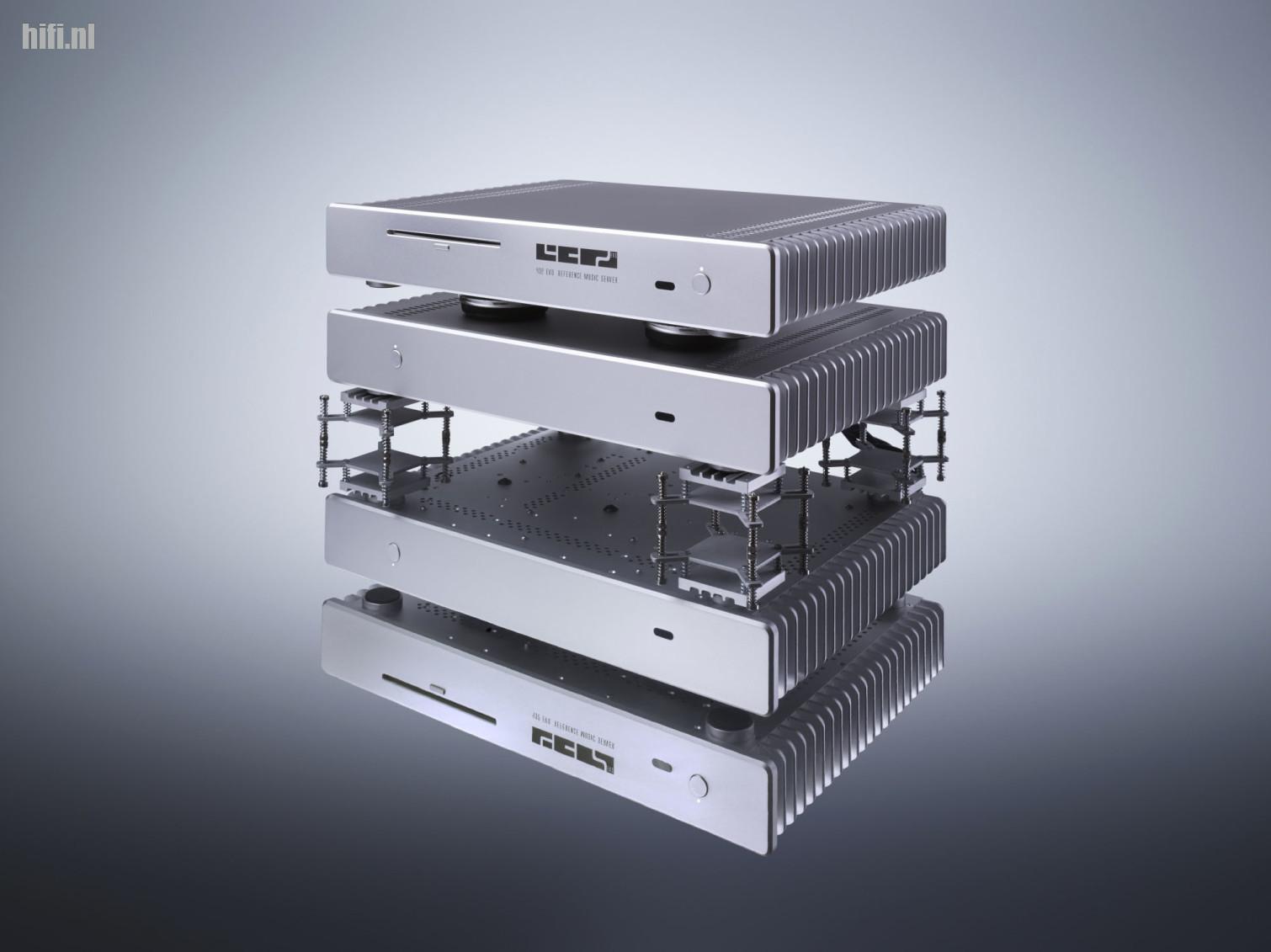
A first important reason can be found in classical music. A music genre that nowadays is usually composed and performed in the frequency of 440 Hz as tuning standard, officially written as A4 = 440 Hz (also known as the Stuttgart Pitch). This is the musical note of A aboven middle C and serves as the tuning standard for the musical pitch. O.K. so this is a gadget which is mainly useful for classical music lovers? No, not at all; long before the 432 EVO brand was founded, Frederic discovered that Geert Huinink, a Dutch composer well known for his collaboration with DJ Ti√ęsto, was also using 432 Hz, and this fact really caught his attention. As the 432 EVO adventure started out from his Hi-Fi shop named Klinkt Beter, research was performed into this intriguing phenomenom.
Everything can be, but nothing must be
First, a selection of 440 Hz based music from several genres was converted into 432 Hz, followed by listening sessions with small focus groups. The result was as bizarre as fascinating, as in the end 58 out of 60 listeners found that the 432 Hz-versions from the selected tracks sounded better than the originals in 440 Hz.
There’s still a chance that you may not prefer this lowering of the pitch. That's ok though, as every 432 EVO saves all ripped CDs or downloaded files in it’s original pitch and file format. The music is never changed and the same applies to the files stored on the internal storage inside the 432 EVO.
The conversion process happens in realtime and on-the-fly while playing, and this is where the magic happens. Within the remarkably extensive possibilities users can select between live on the fly 432 Hz-conversion, upsample-only mode or bitperfect mode. These modes work with any music that the 432 EVO can play, independent from the source, such as Tidal, Qobuz, internet radio, files and so on.
432 EVO Master
But let’s not forget that the music server as being in front of me, is mainly intended to be the best solution that designer Frederic has currently realised. Because this flagship model contains all knowhow and knowledge gathered over many years, where not only a lot of listening research was performed into every inhouse programmed software change, but also a lot of attention went into every little internal part of the design.
He describes this project as follows: ‚ÄėThe 432 EVO Master is our flagship and our best music server in his class with a ‚Äúcost no object‚ÄĚ performance. It can easily surpass any other digital source, including the most exclusive digital cd-transports, and sounds more like analog sources without any hint of digital harshness. In 2017 the first version of the Master was introduced at the High End show in Munich, and it immediately received ‚Äúbest of show‚Äô‚ÄĚ nominations from both AV Showrooms and Hifi Pig.'
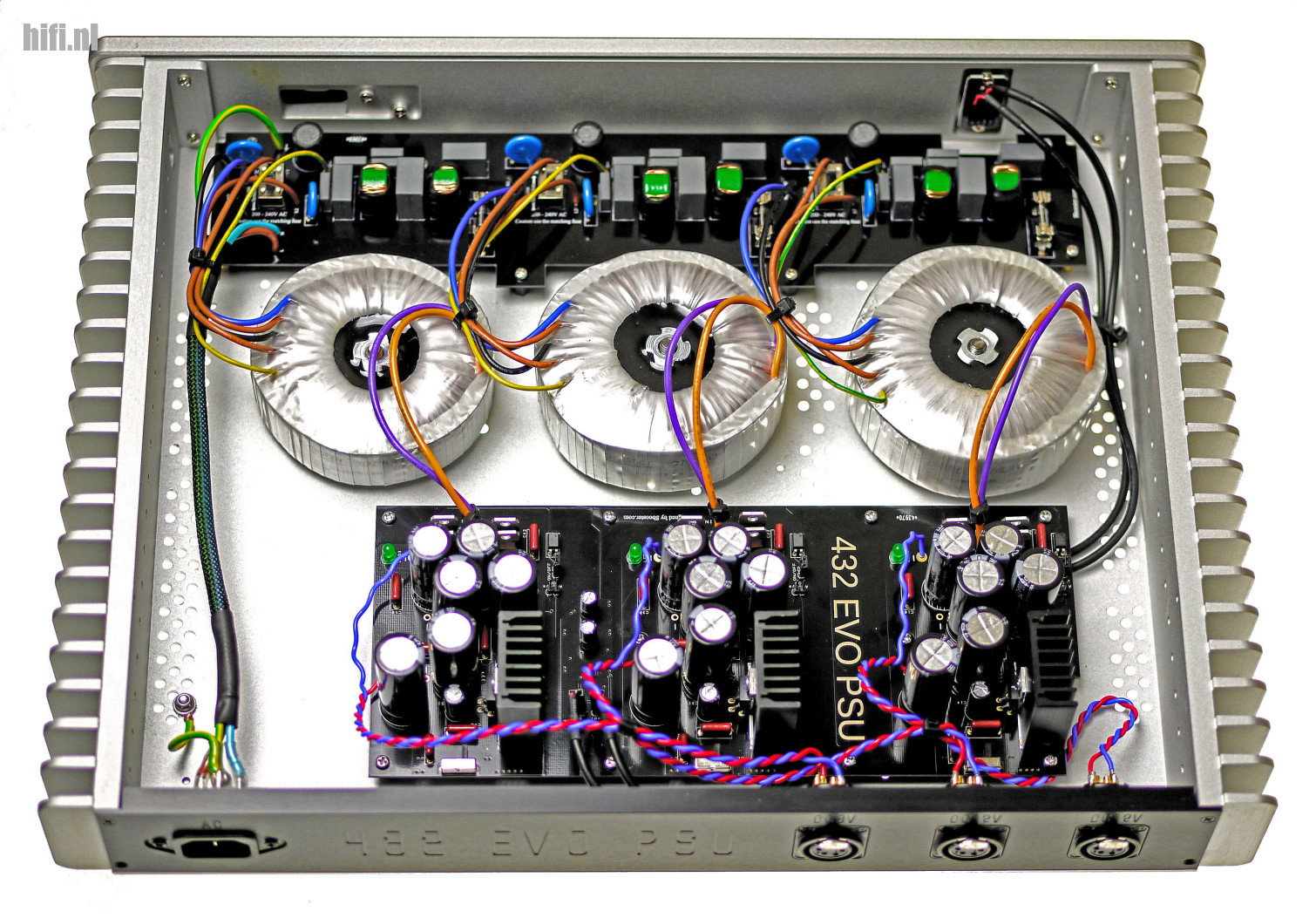
'To accomplish this, we specifically use a dual chassis. The first chassis houses the music server hardware, and can easily be recognised by the CD slot on the front panel, where directly behind it, a special Teac CD-only ripdrive is mounted. We have not opted for a more universal DVD drive from the same brand, because the CD version is better at ripping damaged or problematic CD‚Äôs. We also use a modern energy efficient quad-core CPU with 8 GB of RAM. To achieve the great audio performance of the 432 EVO Master, the audio decoders run on a specially dedicated CPU core which is freed from any other processes, and it‚Äôs running it‚Äôs own clock scheduler which does not interrupt the core 1000 times per second. This results in a much lower software jitter as task switches are significantly lowered. As an important finishing touch, critical internal components are internally decoupled from the chassis, and even the smallest internal wire receives the same attention for fanatical level of detail‚Äė
Total freedom of control
‚ÄėLast but not least it is worth mentioning that the Master provides the envious freedom of a full Roon or Logitech Media Server backend. With us, no one is bound to the expensive Roon. Another important reason relates to the typical sound difference between these two music library software packages. While some prefer Logitech, others find the joys of Roon irresistible. To continue, the 432 EVO Master is equipped with a high precision clock which is future proof. The USB DAC output of the Master is handled by a dedicated ultra low noise output card which does not reclock, instead the clock is provided from a special standalone superclock board. The server is completed by a fast Samsung 2 TB SSD drive.'

‚ÄėThe second chassis houses a very advanced power supply and contains three ‚Äúreal‚ÄĚ linear toroidal transformers specially designed and tuned per country!¬† We did not opt for the cheaper universal solution which is the usage of identical transformers for all countries, where the AC voltage can be toggled via a switch. We usually find with such designs they hum in regions different from the country of origin, and also excess warmup of the chassis. Another limitation are designs with a single shared transformer with multiple secondary taps. Inductive effects occur between the taps, and reducing hum is more difficult. Our design solves this problem at the source, by using three smaller transformers, each specified for the designated region, which avoids the source of hum. Another reason for choosing three smaller transformers instead of a single larger unit, is the fact that the latter sound quality is reduced. A group of smaller transformers is very effective in dealing with fast transients, as they recover faster from instant power demands and are independent. This has a remarkable positive effect on the sound quality as it leads to a blacker background, virtually eliminates all noise and almost completely reduces power supply crosstalk between internal digital circuits. Housed in a custom dedicated chassis which complements the server chassis, the design is both silent and generates virtually no heat.‚Äô
Preparations
Music Servers at this price point, where many measures have been taken to achieve the highest possible performance level, are - as expected - a pleasure to listen to. However, there’s always a flip side, as when the sound information density of a device rises, the more critical it becomes for the side conditions to also be optimal.

First off, for this test I compared the 432 EVO Master with my own digital reference Grimm MU1, which is connected using the very excellent digital Siltech Golden Eagle 110 Double Crown AES/EBU interlink to the highly revealing and still very natural sounding Mola Mola Tambaqui DAC.
The second challenger is the different sounding but still very beautiful Brinkmann Nyquist mk II, which is just like the two other sources also a streamer, but one which is already equipped with an extensive DAC section. A big financial advantage is that such design does not require an extra (expensive) digital interlink.
Optimized for USB
I utilised a large selection of USB cables, as the 432 EVO Master is mainly designed to connect via an optmized USB connection while also supporting Roon & Squeezebox endpoints. These include the surprisingly good and very affordable Tubulus Argentus v3 from The Netherlands supplied by Frederic. Furthermore I employed an AudioQuest Vodka and Diamond USB interlink, and also tried a MIT SL-Matrix and Crystal Cable Diamond USB interlink ‚Äď all intended to find the ideal match.
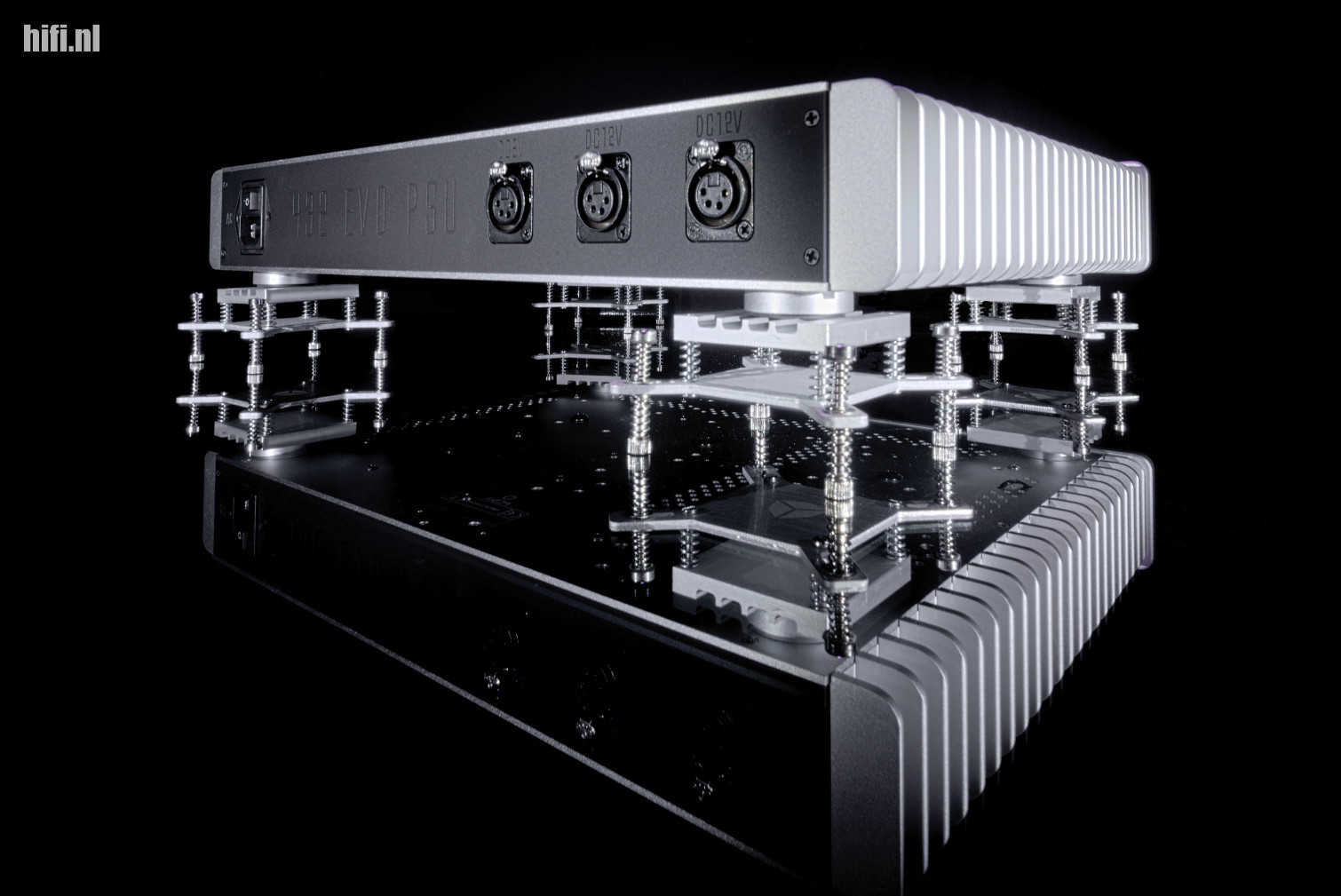
To also evaluate the influence of the DAC, I not only tested the 432 EVO Master on the Mola Mola DAC, but additionally tried the DAC section of the Brinkmann Nyquist mk II, a Sonnet Morpheus and a MSB The Discrete DAC. Another interesting question relates to the delivery of the digital data in my home network. I usually trust my TP link WiFi bridge, which performs remarkably well. But to use high quality wired ethernet, I connected all the challengers to the excellent SOtM sNG-10G ethernet switch powered by an sBooster PSU.
Speakers were the extremely proven Master Contemporary C’s, while other cabling was a mix of Nirvana Audio (SX and PC+ powercords, SX speaker cables), Essential Audio Tools (Current Conductor powercords), Kemp Elektroniks (Reference powercord), AudioQuest (Fire interlink) and Siltech (Empress Crown and Classic Legend 880i interlinks). Besides using my reference Zanden 6000 amplifier, I also used the gorgeous Trafomatic Lara pre-amp and Pandora mono power amps. As usual all of the electronics were placed on my Finite Elemente Pagode Master Reference rack, in the wide version.
Musings
In fact on of the most important aspect of every product under test, is not only to discover its properties, but to also define external influences. In other words, in this case what is the own sound signature of the 432 EVO Master, and how much do other factors have an influence?
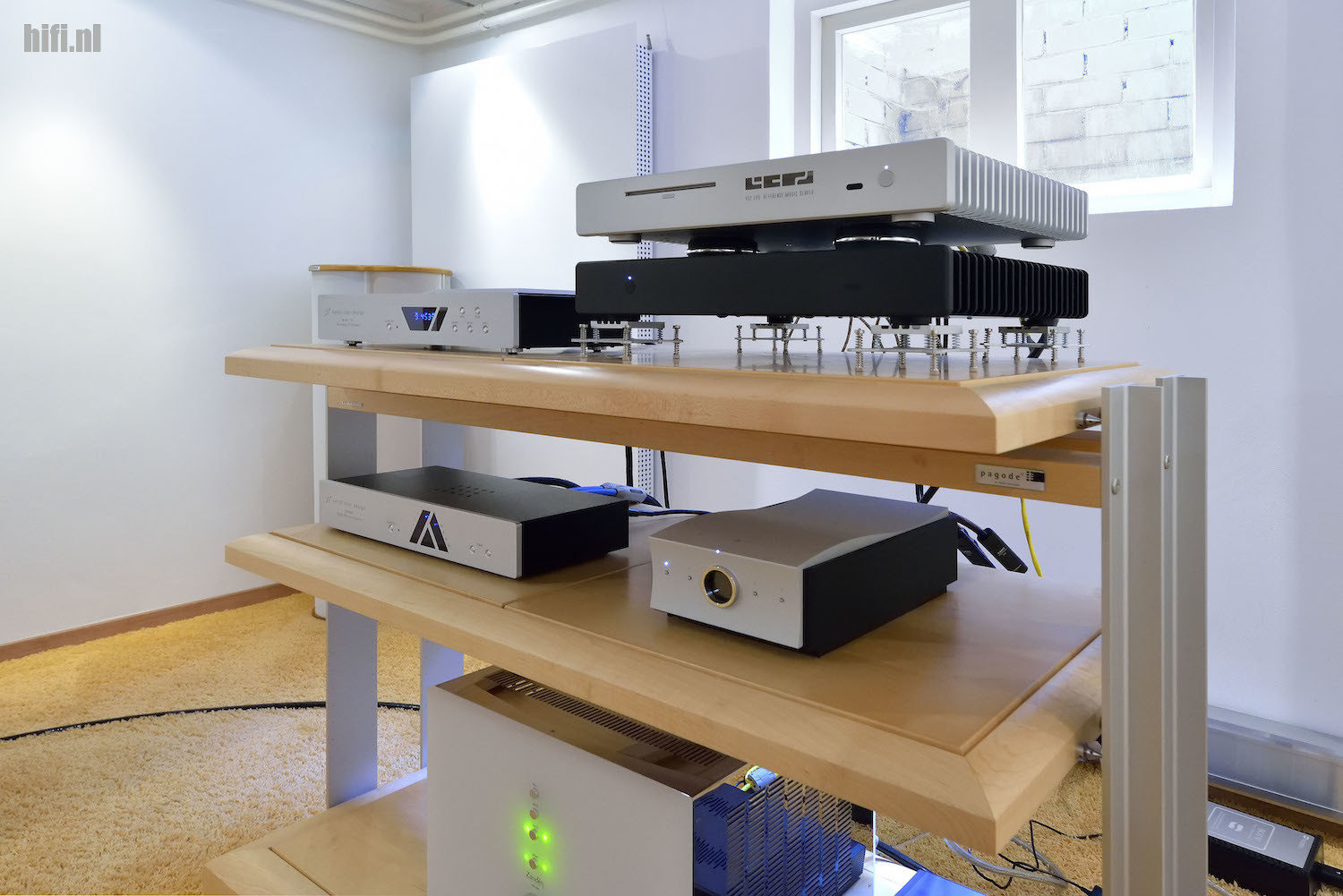
Let me start by telling you that this combo is available in both black and silver, and Frederic has deliberately provided me with a silver music server chassis and a black power supply, so that I can observe the influence of the beautiful lines of this duo. When they are in front of me standing on the Finite rack, they come across as nice and calm looking devices. On the front panels there are only two leds, a single 432 EVO text logo on the front panel of the server chassis, and a logo engraved on the back panel of the power supply and beyond that there is a dead silence. The special support feet visible on the photos under the power supply were invented by Frederic but unfortunately(!) are not for sale. They perform excellently but were a little bit redundant because of the already excellent decoupling skills of the Finite rack. They were only partially used for this test, and mainly for the interesting ‚Äėchallenge‚Äô to get the best ouf of this wonderful music server.
The quality of this Belgian music server is so high that relating to external influences, it was very obvious to hear which DAC and cables resulted in the best sound. In the end, in my own situation the Mola Mola Tambaqui DAC with both the Grimm MU1 and the 432 EVO Master using the affordable Tubulus Argentus USB cable the most balanced result was achieved. While your mileage may vary, for this test the ideal match was found very quickly.
Listening 1   
Certainly for brands which you do not yet know but which hold a big promise, it’s always a pleasure to get the first impression. Frederic can just like any other importer/manufacturer, install the products himself in my system in the way he considers them to perform maximally. To keep everything as clear as possible, we start with Roon and not yet with Logitech Media Server, because the Grimm only runs on Roon, and therefore this is the best way to compare both. When turning on the 432 EVO it is a little bit slower to boot than the Grimm, but once up and running they both appear as fast. Nice!
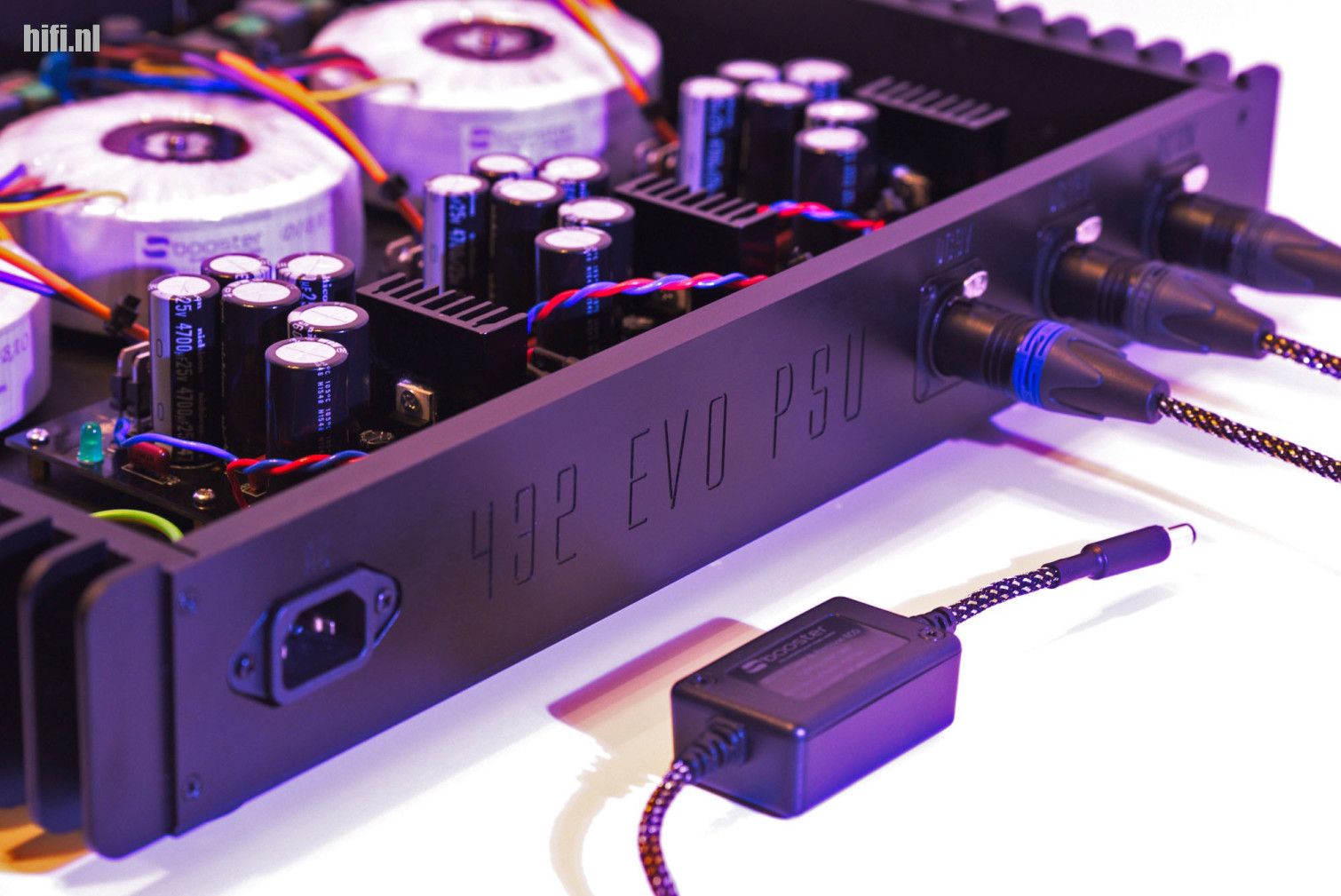
As first music example, I‚Äôll start with a blood curdling beautiful live concert recorded in May, in the midst of the corona pandemic and lockdown. More specific, the Up Close concert from Haevn which was recorded without a live audience in ‚ÄúDe Vereeniging‚ÄĚ, the¬† Municipal Theater of Nijmegen. Fortunately, it can now also be ordered from their webshop,¬†which is good news, as it‚Äôs an absolute must have. Played on the Grimm MU1 and Mola Mola Tambaqui DAC the wonderful ‚ÄúKite in a Hurricane‚ÄĚ provides a real goosebump sensation. So beautifully tangible, sensitive, colourful and 3D spatial, how would the 432 EVO Master handle this?
When I switch the Tambaqui from the AES/EBU to the USB input, and switch to the EVO in my Roon app, I unconsciously hold my breath. Once again the realism enhancing shuffling of chairs, cracking stools and the other stumbling of the many musicians within the beautiful venue acoustics of De Vereeniging is conveyed. But when Jorrit Kleynen starts to play the piano and singer Marijn van der Meer falls in not much after, everything is different! The first aspect which strikes me, is that the flagship 432 EVO unit has a more light-footed character. Now I know very well that USB connections naturally also have this tendency to a certain extent, but the EVO Master goes further. It is light-footedness at the service of the music that makes the whole thing extra listenable in a certain way.
Unprecedented realism
Because at the same time, a phenomenom happens which I can best describe as ‚Äúde-hasting‚ÄĚ. The Grimm also masters this, but the 432 EVO Master even goes a little bit further. With ‚Äúde-hasting‚ÄĚ I mean the feeling that you get as listener with music, to even process very complex passages. With some, and mainly less performing products, the music can become overly bloated and prominent in certain areas, and the music is almost forced onto you. None of that with this Belgian music server who continues to act like a gallant gentlemen.

There are also differences in the bass and even though it does not fully reach the authority of the Grimm MU1, Brinkmann Nyquist, Naim ND555 and some other very expensive top products, it has other charms at reference level. A nice track to demonstrate this, is A Trace Of Grace from the album Monteverdi: A Trace Of Grace. Here bass player Steve Swallow plays exactly the kind of bass which I mean, and that in the right setting can come across as very tangible and realistic. For sure the EVO Master is catching up at this aspect, and now is at the same level with other top streamers. Also the super beautilfully captured 3D sound field from this album comes to the fore in a very tangible and believable way. It is completely separate from the music in a beautiful way, but still manages to continuously connect with it. Properties that guarantee profound enjoyment.
Listening 2                 
In a separate second extensive listening session, I’m getting to work the enormous arsenal of software features including switching between 440 Hz and back to the default setting which is 432 Hz, and I’m also switching the backend from Roon to Logitech Media Server.

Let me state that you don't necessarily have to take advantage of the large number of possibilities, but it is of course a very nice and intriguing aspect that all of these options are being offered to completely tune the sound to your own liking. As far as I know, there are no competitors which offer so many features at this level, as the 432 EVO Master. The first thing to tackle within the menu, which is extensively laid out in the manual, is switching between 440 Hz to 432 Hz. I immediately notice that the music sounds at a slower pace, and comes across as a little bit slower. I can confirm that the music gets a little bit more glow and colour, and it can surely add a certain charm and relaxed feeling. But honestly in my personal opinion, even after some conditioning I still find this less appealing. The tempo is too slow for me and it does not bring me closer to my known music, which is exactly the opposite what Frederic is trying to accomplish.
On the other hand, this option does not cause harm, and nobody is forcing you to use it. Personally I find the 10(!) DSP filter settings a lot more interesting, which I will explain in the next paragraph.
Filter settings
Although I’d wish that every of the 10 filters was capable of earth shattering audiophile effects, I  honestly must say that the first five settings mainly cause a subtle difference in the playback. For sure it’s not easy to say each of those are better or worse. Starting with the time domain filter, it becomes different and more exciting. Immediately the musicians are separated more tightly, the playback is cleaner and there’s a better overview of the complete picture.
Time domain precision offers 28 bits processing instead of 24 bit, and makes the sound a little bit cleaner and more precise. But it starts to get really interesting when using the so called ‚ÄúArchimago‚Äôs‚ÄĚ DSP settings. This type of filter is based on intermediate phase with accurate phase within the audible range of human hearing, with almost no pre-ringing. I understand this explanation is very technical, but it is immediately clear that the last three filter settings get the best out of the EVO. Clearly more openness, more refinement, more fluent without being too soft, and a wide expanded 3D soundstage.
Logitech Media Server
The transition from Roon to Logitech Media Server appears to have at least as great an influence on the playback, but on a completely different level. This is very easily realised within the EVO web interface, but control wise, it is immediately a big step backwards when you are used to Roon’s intuitive app. On the other hand, it is completely free and it just works without any hickups.
As expected, in it‚Äôs own way Roon sounds very ‚Äėearthy‚Äô, layered, colourful, fluent and in a way a little bit rounded, while Logitech Media Server sounds more direct and somewhat more pointy, and involves you more into the music in an explicit way. For sure one is not better than the other, but mainly different, and just like the filter settings, it is very worthy that this possibility is being offered.
Conclusion
With the last generation of the 432 EVO Master, Frederic Van den Poel has delivered his best music server to date. Both chassis look excellent and even though the webinterface (mainly used for the filter settings and switching between Roon and Logitech) have some resemblance with the well known Vortexbox interface, everything else is so very different that it cannot be compared. This is a totally different machine, which is obvious from the enormous amount of custom features and their sonic impact. Because no other Vortexbox based solution from the recent past comes close to the performance of this high-end machine.

Even though the price is downright hefty, and a small minus is the fact that it only support USB connections towards a DAC, what we have here is a very special music server which within it’s price class, is among the best challengers today. Even though a top class CD transport still sounds substantially different in it’s own way and still is hard to beat on it’s own strong aspects, there is indeed a far-reaching analog sound. This makes the rendering smooth, airy, spacious and naturally realistic and moreover, also has exactly that right outlined and catchy character that is so typical of a good analog source. Nice work Frederic!
432 EVO Master
‚ā¨ 12.500 (silver or black) | www.432evo.be
